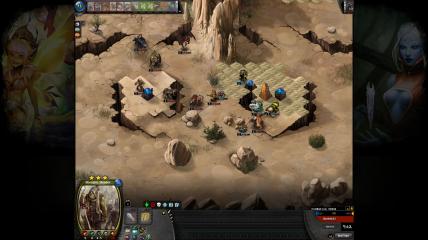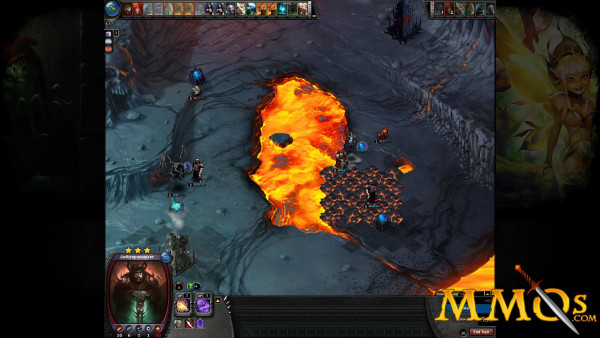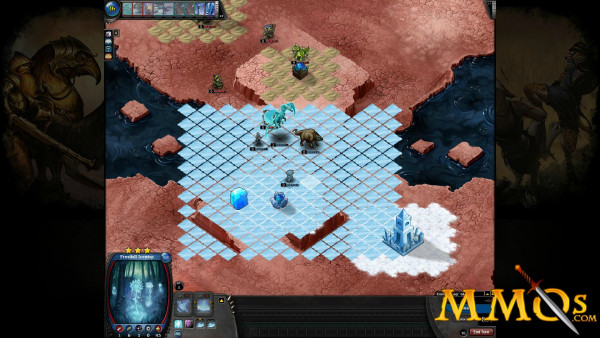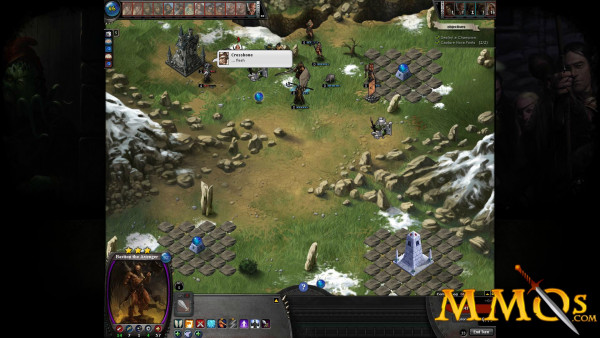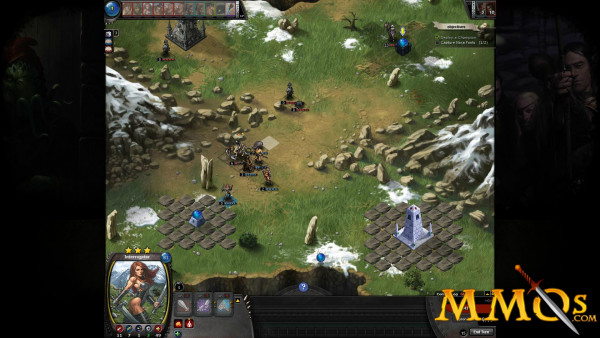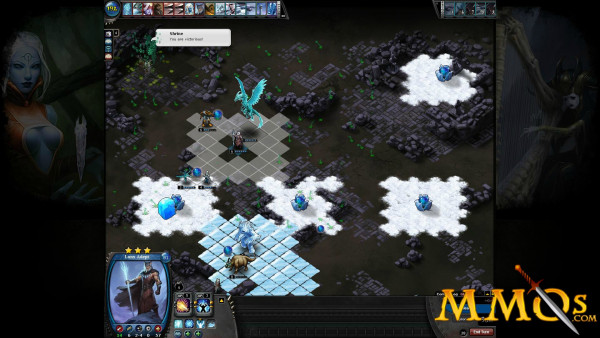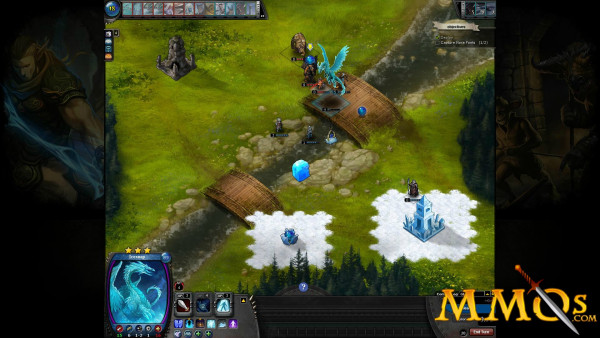Pox Nora
Pox Nora combines elements of turn based strategy and trading card games in a fantasy atmosphere. Choose between one of eight factions, build your deck, and take to the fields of battle to assert your dominance.
| Publisher: Desert Owl Games LLC Playerbase: Low Type: Strategy RPG Release Date: August 01, 2006 Pros: +Unique combination of TCG and Strategy. +Numerous play styles. +Massive number of runes(cards). Cons: -Limited 4x3 Screen -Long matches. -Steep learning curve. -Browser based marketplace and deck builder. |
Pox Nora Overview
Pox Nora is a mixture of trading card games and turn based strategy, where players summon champions to the battlefield to fight for dominance. Choose between one of eight elemental factions, each with a distinct set of runes (cards). Runes are not just creatures but include spells, items, and artifacts to be used to gain the advantage. Use spells and augmentations to sway the tide of battle and enhance your creatures. You can summon as many runes as you can to the battlefield, given enough resources, to destroy your enemy’s base. Battle against a formidable AI through the campaign or challenge other players in the arena. Customize your deck with earned runes and test your skills in tournaments. As a tactical turn-based strategy game Pox Nora tests your perseverance and skills as a tactician.
Pox Nora Key Features:
- Various Decks - 8 factional decks to choose from, each with a distinct elemental foundation.
- TCG/Strategy Hybrid - use tactical turn-based strategy to defeat enemies on a diamond shaped battlefield while relying on the runes in your deck.
- PvP - test your skills against other players in a skirmish or enter tournaments and claim victory.
- Collectible Runes - over 2,000 collectible runes spread across 8 factional play styles.
- Tactical Game Play - negotiate resources, meta abilities, skills, and various environments to defeat your enemy.
Pox Nora Screenshots
no images were found
Pox Nora Featured Video
Pox Nora Review
By, Sean Sullivan
What I expected was another trading card game trying to compete with Hearthstone and Hex. What I found was a deep turn-based strategy game that distinguishes itself in a multitude of ways. Pox Nora released in 2006 but Desert Owl games just released the 26th expansion last week. You don’t need to argue that the developers care about their game, nor that there must be a strong community that happily lets Pox Nora rest on their back. And that’s because it's a niche experience, and when it captivates your attention you don’t want to break free.
Final Fantasy Tactics
Game’s with a “skip tutorial” button tend to earn a point in my book. Cheers to you Pox Nora. However, considering my unfamiliarity with the digital tabletop, I chose to endure the tutorial and learn the basic mechanics. Generally, your objective is to destroy your enemy’s shrine before they do the same to yours. You defend your monuments on a hexagonal grid, occasionally inhabited by bric-a-brac and dangerous tiles that quickly end your soldier’s life. In the top left corner of your screen rest your cards, that can be summoned by drag and dropping onto the field. Each turn you’ll draw new cards from an unforeseen deck somewhere off-screen. Placing a champion is like picking up a polyurethane model and setting it on the cardboard map in your friend’s basement. In each turn your allocated a limited number of actions. So, after dropping my unit onto the field I was unable to make any more moves, and clicked “End Turn.”
Old School Presentation
Right away I was smitten with Pox Nora’s visual aesthetics. They won’t appeal to everyone, but will cater to long-time fans of turn-based RPG’s and dark fantasy enthusiasts. Champion portrait art is a melange of comic book characters and Boris Vallejo models, while the sprite models evoke the sense of figure on a table. Amazingly—perhaps not quite so—one champion called Executioner is nearly identical to Frank Frazetta’s Death Dealer (one of which in the series was used for a Molly Hatchet album cover). And champion movement sequences reinforce the notion, sounding like plastic scratching the surface of a table.
But, The 14x3 aspect ratio is disconcerting. While not unbearable I’m somewhat surprised the bookends haven’t been replaced by map details. Even if it’s a no-man’s land at least it gives a further sense of presence to the battlefield; right now it’s unoptimized space. And after 26 expansions I would think one would update the aspect ratios limitation.
Graphics don’t stop with poor resolution space. While the game encourages summoning an army to defend your keep, too many units prove to be a hindrance. When there’s a cluster of champions it’s near impossible to discern enemies, making for an anxious-fueled fight. And oftentimes I struggled to attack an enemy because their model was obscured by another champion. At least the music was epic as I spammed left-click.
The music is high fantasy and sets the environmental tone, when it’s playing. For some unknown reason the music randomly fades into nonexistence while in the middle of battle. Typically it would repeat on loop ad infinitum. Ignoring any issues with the aesthetics I stopped admiring the art like a confused undergrad and focused on the fight.
Frog Fractions Economics
With each turn you accumulate Nora, a resource used for summoning runes, including champions, spells, and items. Every rune has its own cost; while the Conscripted Warrior costs 54 Nora the Interrogator demands 81. Or, you can use the spell Earthquake for 45 Nora, to deal AOE damage and wipe out skeletons 4 tiles away from the spell’s epicenter. But at the start of your next turn it recovers. But managing Nora becomes tactical, as you can choose not to summon runes and hoard it for a future barrage. It becomes a balancing act, where you must be your own economic advisor to win the battle.
And Nora isn’t the only resource. At the beginning of each turn champions generate Action Points (AP), translating into movement and attacks. It’s not a static resource, but its demands increase with subsequent attacks in one move. After attacking with my Interrogator once basic attacks cost rose from 3 AP to 5 AP. AP management becomes critical to ensuring your victory.
The Hero With Two-Thousand Runes
Every champion has their own stat set, corresponding to damage, speed, range, defense, and health, leaning towards an optimal play style. But champions have innumerable meta-abilities that can be difficult to negotiate. The Glacial Titan Champion has 12 concurrent elements to keep track of, an overwhelming task for any new player. And this lends to the game’s high skill cap. Only through continuous play and familiarity can players master Pox Nora’s diverse ability set.
Multiplayer
PvP is just like a standard match. But combat moves at a far slower pace; multiplayer demands patience. Each player has one minute and fifty seconds to conduct their turn. And many will take their time scrupulously planning their moves. Ultimately, I preferred the algorithmically calculated AI to fellow players, as the slow-paced proved too much for my virtue to handle. For the zealous there are draft tournaments for them to test their skills, but there is an entrance fee.
Building Your Deck
The tutorial will introduce you to premade decks, letting you choose from one of eight factions. But you can build your own deck. Amazingly, the deck builder is not contained within the client but must be accessed from the game’s website; it’s called the Rune Builder. It’s a fairly easy to use point and click system. But since you can’t alter any of the premade beginner decks you’re relegated to earning new runes. And since you can’t pair runes of different elements in the same deck you’ll need enough to form an entirely new one. So, you’ve got two options: grind or pay money. If you choose to grind you’ll be playing matches to earn gold and pray the RNG gods give you the cards you’re looking for.
Cash Shop
Pox Nora’s marketplace is also browser based. The cash currency is DOG (Desert Owl Games), at a going rate of 500 DOG’s for $5.00 or 5350 DOGs for $50.00 for the big spenders. You earn gold from playing matches in-game but you’ll need quite a bit to make any purchase. After playing Pox Nora for three or four hours my pockets were bursting with 850 gold. Checking the store I realized I would need 3510 just to buy an Extended Set Pack: 6 common, 3 uncommon, and 1 rare rune. Or I could buy a complete deck for 30,000 gold. The alternative is to purchase DOGs and spend them instead, at 195 and 2500 respectively. You’ll be investing extensive hours of time into Pox Nora before you’re able to build a deck using exclusively in-game earned gold.
It’ll take a significant time investment to earn rare and valuable cards. So it’s a balance: time versus money (which do you value more?). While PvP undoubtedly suffer from the rare Scrooge McDuck’s that splurge on the marketplace I found an ubiquitous experience where most players were on the same level. And I think the campaign shines out against the multiplayer aspect, but primarily because I don’t have the patience for player’s deliberation.
Final Verdict - Great
Pox Nora receives a lot of love from its developers and community supporters. Not many games can boast 26 expansions—the original lure that hooked me to install Pox Nora. But after all those updates is it worth playing? Pox Nora attracts a niche audience, one tolerable of slow-paced combat with innumerable meta rules to juggle. It’s formidable bar to competitive play in the way of slow gold accumulation scares potential players. But if you like RPG tactics, charming sprites, and a fantasy universe I highly recommend installing Pox Nora.
Pox Nora Videos
Pox Nora Links
Pox Nora Official Site
Pox Nora Steam Store
Pox Nora Wikipedia
Pox Nora Reddit
Pox Nora Wikia [Database/Guides]
Pox Nora System Requirements
Minimum Requirements:
Operating System: Windows XP/Vista/7/8 or Mac OSX
CPU: 500 MHZ CPU
Video Card: NVIDIA or ATI Video Card with 64MB of VRam
RAM: 200 MB
Hard Disk Space: 1 GB
Pox Nora is Max OS X compatible.
Pox Nora Music & Soundtrack
Pox Nora Additional Information
Developer(s): Octopi Media Design Lab, Sony Online Entertainment (SOE)
Producer(s): Luke Bultman
Designer(s): Dan Kopycienski, Arthur Griffith, Justin Felker, Brian Dellinger, Bryan Rypkowski
Engine: Java
Release Date: August 01, 2006
Steam Release Date: October 15, 2014
Development History / Background:
Pox Nora was originally designed and developed by Octopi Media Design Lab, which was bought by Sony Online Entertainment on January 16, 2009. The new division was renamed SOETuscon, but was eventually closed down by SOE on April 01, 2011. Pox Nora operated as potential free-to-play game where players had to earn an in-game items to craft runes but has since switched to an in-game gold standard with the option to purchase runes with money. Since its release Pox Nora has release 26 expansions, at regular intervals, with the latest expansion Path of De'lim released on August 19, 2015. Pox Nora became available through Steam on October 15, 2014, leading to a surge in players.
